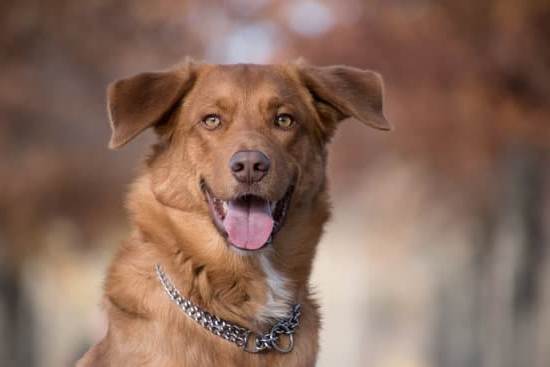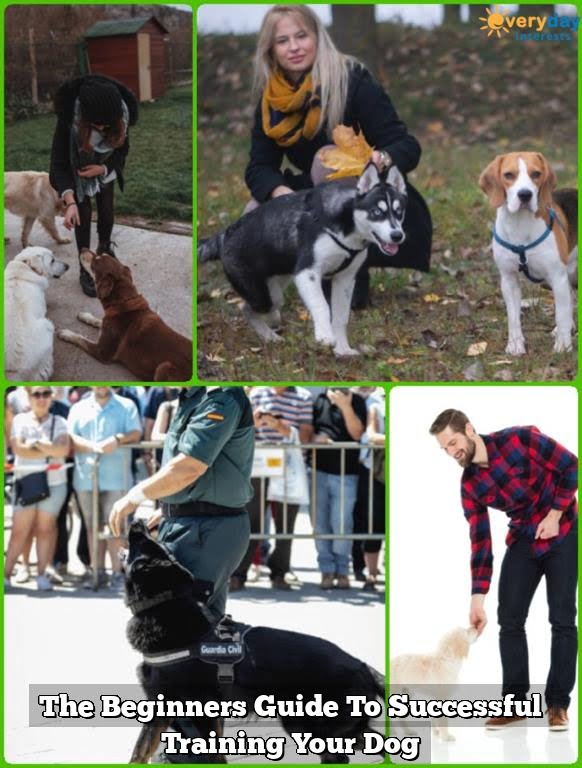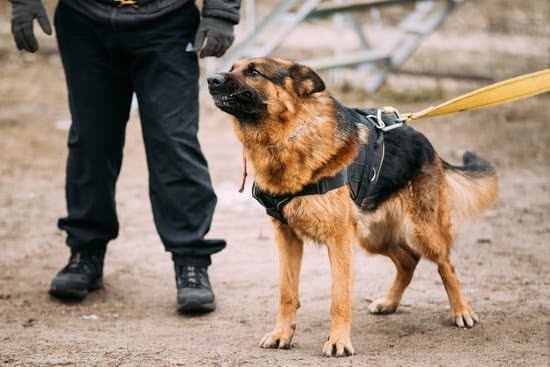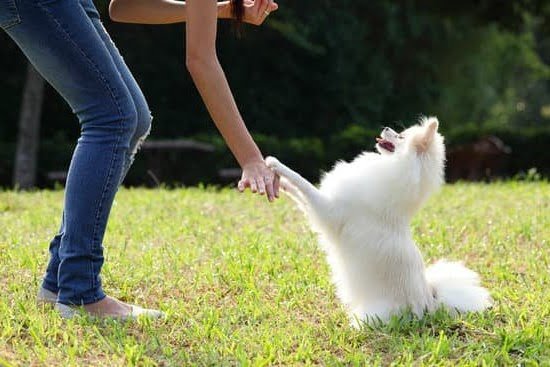Guide dogs play an invaluable role in the lives of visually impaired individuals, providing them with independence, mobility, and a reliable companion. But have you ever wondered how these remarkable dogs become such integral partners? It all begins with their training. In this article, we will explore the journey of a guide dog in training and the crucial steps involved in preparing them for their future role.
A guide dog in training is a specially selected and extensively trained dog that will eventually provide assistance to someone who is blind or visually impaired. These dogs are carefully chosen based on specific criteria and undergo rigorous training to ensure they meet the needs of their future handlers. From navigating obstacles to detecting potential hazards, guide dogs are trained to make everyday life safer and more accessible for those with visual impairments.
Training a guide dog begins at a very young age, where they are carefully socialized and taught essential obedience skills. This early stage of training takes place in foster homes, where puppies are exposed to various environments, people, and animals. Foster families play a critical role in shaping the behavior and social skills of these future guide dogs.
The importance of training and preparation cannot be overstated when it comes to guide dogs. The journey from a playful puppy to a fully certified working guide dog requires dedication, patience, and specialized expertise. Throughout this article, we will delve into the various stages of training that these remarkable animals go through before they embark on their life-changing partnership with a visually impaired individual.
The Selection Process for Guide Dogs in Training
The selection process for guide dogs in training is a critical and meticulous procedure carried out by guide dog organizations. These organizations carefully choose puppies with the potential to excel as guide dogs based on a set of criteria and qualities. The selection process is vital in ensuring that only the most suitable candidates are chosen to undergo the extensive training required for their future roles.
Guide dog organizations typically begin the selection process when puppies are only a few weeks old. They consider factors such as breed, health, temperament, and genetic predisposition to ensure that the puppies have a strong foundation for success. Guide dogs must possess certain qualities, including intelligence, adaptability, calmness, and most importantly, a willingness to work.
Health assessments are also essential during the selection process. Puppies need to be in good physical condition with no underlying health issues or hereditary conditions that could hinder them from fulfilling their duties as guide dogs. Regular veterinary check-ups, vaccinations, and proper nutrition play a crucial role in maintaining their overall health.
Temperament assessments are equally important in selecting guide dogs in training. Potential guide dogs should exhibit confidence, sound judgment, and an ability to stay calm in stressful situations. They should display an eagerness to learn and respond well to positive reinforcement techniques used during training.
Puppy Rearing and Socialization
During the early stages of training, guide dogs in training are placed with a foster family or puppy raiser. This crucial phase plays a significant role in shaping their behavior and preparing them for their future roles. The foster family takes on the responsibility of providing a loving and structured environment for the puppies to grow and develop.
One important aspect of this stage is socialization. Guide dog organizations understand the importance of exposing the puppies to different environments, people, and animals to ensure they become confident and well-rounded companions. The foster family takes the puppies on outings to various public places such as shopping centers, parks, and restaurants to help them become accustomed to different sounds, smells, and situations.
To further enhance socialization, the foster family often hosts playdates with other dogs to encourage positive interactions. This helps guide dogs in training learn appropriate behaviors when interacting with other canines. It also helps them develop vital social skills that enable them to remain calm and focused even in distracting situations.
In addition to socialization, the foster family plays a crucial role in basic puppy rearing. They teach foundational skills such as proper house manners, walking on a leash without pulling, and following basic commands like sit and stay.
The guidance provided by the foster family during this stage sets a solid foundation for future training. Ultimately, it is through their nurturing environment that these puppies begin transforming into potential guide dogs who will have a profound impact on visually impaired individuals’ lives.
Some key points about Puppy Rearing and Socialization
- Foster families provide a loving and structured environment for guide dogs in training.
- Socializing puppies involves exposing them to various environments, people, and animals.
- Foster families teach foundational skills such as house manners, walking on a leash without pulling, sit, stay command etc.
- Puppies gain confidence through positive interactions with other dogs during playdates organized by the foster family.
Basic Obedience and Command Training
During the process of becoming a guide dog, basic obedience and command training are essential steps in developing a solid foundation for these remarkable animals. This stage of training focuses on teaching guide dogs in training essential commands that will enable them to assist visually impaired individuals effectively.
Guide dog organizations prioritize obedience training to ensure that guide dogs are well-behaved, responsive, and reliable in any situation. The initial obedience training includes teaching commands such as sit, stay, down, and come. These commands lay the groundwork for future specialized tasks and help guide dogs maintain focus and discipline.
The importance of building a strong foundation in obedience cannot be overstated. Basic obedience sets the stage for higher-level skills that guide dogs will learn later in their training journey. By mastering these fundamental commands, guide dogs become more capable of responding promptly to their handler’s needs.
Command training is typically conducted using positive reinforcement techniques. Trainers reward desired behaviors with treats or praise and consistently redirect undesired behaviors. This approach helps create a positive association between following commands and receiving rewards, motivating the guide dogs to perform correctly.
| Training Stage | Key Focus |
|---|---|
| Basic Obedience Training | Teaching foundational commands (sit, stay, down, come) |
| Command Training | Using positive reinforcement techniques to teach specific commands |
As guide dogs progress through their basic obedience and command training, trainers closely monitor their progress and assess their ability to retain and execute the learned commands. Only once they have mastered these essential skills can they move on to specialized training, where they will learn how to navigate obstacles, detect hazards, and guide individuals in various environments.
By establishing a strong foundation in basic obedience and command training, guide dogs in training are better equipped to fulfill their crucial role as companions and guides for visually impaired individuals. These obedient and responsive canines become a lifeline of independence and mobility for those they are matched with.
Specialized Training for Guide Dogs
Specific Skills and Tasks
During specialized training, guide dogs in training are taught a wide range of specific skills and tasks that enable them to assist visually impaired individuals. These skills include navigating obstacles, detecting and avoiding hazards, and guiding their handler in various environments. Guide dogs are trained to recognize common obstacles such as stairs, curbs, and narrow spaces, allowing them to safely guide their handlers through these situations. They are also trained to stop at intersections and evaluate traffic patterns before proceeding.
In addition to navigating physical obstacles, guide dogs are taught skills such as targeting specific objects or locations. For example, they can be trained to locate the nearest elevator or the exit in an unfamiliar building. They learn how to find landmarks that can serve as reference points during walks or trips.
Another crucial aspect of specialized training is teaching guide dogs how to respond when their handler encounters danger or emergency situations. This includes warning their handler about oncoming vehicles or approaching people who may pose a potential threat. Guide dogs must also remain calm and focused during stressful or distracting situations so they can continue providing reliable assistance.
The Intensive Training Process
Specialized training for guide dogs is an intensive process that typically lasts several months. The training is based on positive reinforcement techniques, using praise, treats, toys, and other rewards to reinforce desired behaviors. The goal is for the dog to associate certain actions with positive outcomes, which motivates them to repeat those actions consistently.
Training takes place in controlled environments initially before gradually progressing to real-world scenarios with increasing levels of difficulty. Guide dogs in training undergo rigorous daily sessions focusing on specific skills and tasks. Trainers carefully monitor the progress of each dog and tailor the training program according to their individual needs.
It is important for trainers not only to teach the necessary skills but also to ensure that the guide dogs in training possess the right temperament for the job. Dogs need to be able to remain calm and focused in a wide range of situations, while also being adaptable to new environments and changes. Trainers closely evaluate the dog’s behavior and temperament throughout the training process to determine their suitability for becoming a certified guide dog.
Use of Positive Reinforcement Techniques
The use of positive reinforcement techniques is crucial in specialized training for guide dogs. By rewarding desired behaviors, trainers help guide dogs understand what is expected of them. This positive association fosters trust between the dog and the trainer, making the learning process enjoyable for both. It also encourages guide dogs to develop confidence in their abilities, as they know that their actions lead to positive outcomes.
Positive reinforcement involves immediately rewarding correct responses or behaviors with treats, verbal praise, or physical affection. As the guide dog becomes more proficient in a specific skill or task, the rewards are gradually phased out so that they rely more on verbal praise and other forms of non-tangible reinforcement.
The use of positive reinforcement techniques not only creates a bond between the guide dog and their trainer but also promotes a strong sense of partnership with their future handler. These techniques build mutual trust and cooperation, laying a solid foundation for a successful working relationship between the guide dog and their visually impaired individual.
Bonding and Partnership with a Handler
When it comes to guide dogs in training, their ultimate purpose is to form a strong bond and partnership with a visually impaired individual. After completing their specialized training, guide dogs are carefully matched with a handler based on their individual needs, personalities, and lifestyles. This process of matching is crucial as it sets the foundation for a successful working relationship between the dog and its handler.
The process of bonding between a guide dog and its handler begins long before they are officially paired together. While still in training, guide dogs have regular interactions with potential handlers so that they can start building familiarity and trust. These interactions may involve simple activities such as walks or obedience exercises under the guidance of an experienced trainer.
Once the matching process is complete, both the guide dog and the handler undergo additional training and orientation sessions together. It is during these sessions that they start to develop their unique communication system and learn how to work as a team. The handler also learns how to give commands, anticipate obstacles or hazards, and trust in their guide dog’s abilities.
This bond between a guide dog and its handler goes beyond mere reliance on the dog’s skills. It is a true partnership where mutual trust, respect, and understanding are established. The guide dog becomes an extension of the visually impaired individual, providing them not only with physical support but also emotional companionship.
Through this strong bond, visually impaired individuals gain newfound independence and freedom to navigate through life confidently. With their loyal companions by their side, they can safely traverse busy streets or crowded spaces without hesitation or fear. Guide dogs empower their handlers to engage more actively in society, pursue education and careers independently, and enjoy hobbies or recreational activities without limitations.
Graduation and Certification
After going through an extensive training process, guide dogs in training reach a pivotal milestone in their journey: graduation and certification. This is the final stage where they are assessed to determine if they have acquired all the necessary skills and abilities to become a fully certified guide dog.
Graduation is not only a moment of celebration for the guide dog organization, but also signifies the beginning of an incredible partnership between the trained guide dog and its visually impaired handler.
Final Stages of Training
During the final stages of training, guide dogs in training undergo rigorous assessments to determine their readiness for graduation. These assessments cover various aspects such as obedience, specialized skills, task performance, and ability to handle different environments. Trainers evaluate their response to commands, how well they navigate obstacles and hazards, and their ability to maintain focus even in distracting situations.
To ensure that the graduates meet high standards, these assessment processes can be quite intensive. Guide dogs must demonstrate exceptional competence in guiding individuals across streets with traffic, through crowded areas like malls or airports, and even navigating stairs or elevators safely. Additionally, they are evaluated on their ability to recognize potential dangers such as low-hanging branches or other physical obstructions that may pose risks to the visually impaired individual.
Certification Criteria
The criteria for graduation and certification vary among guide dog organizations; however, there are common elements that most adhere to. Some requirements include a specific age range for the dog (typically around 18-24 months), health evaluations ensuring that they are physically fit for duty, temperament assessments confirming their suitability for guiding individuals in public settings, obedience skills proficiency, and mastery of specialized tasks necessary for assisting visually impaired handlers.
Once these criteria have been met successfully by a guide dog in training during the final stages of assessment, they will officially graduate from the program and can be certified as fully qualified guide dogs.
Successful Partnerships
Graduation is not only a celebration for the guide dogs in training but also marks the beginning of a new chapter in their lives as they are paired with visually impaired individuals. The process of matching each dog with its potential handler involves careful consideration of personalities, preferences, and needs. Compatibility plays a crucial role in creating successful partnerships that will enable both the dog and handler to work harmoniously together.
The bond and partnership between a guide dog and its handler are built through training and orientation sessions conducted jointly for several weeks or even months. These sessions allow them to establish trust, enhance communication, and synchronize their movements as a team. The continuation of this strong bond is essential for efficient teamwork once the guide dog starts assisting its visually impaired partner in their daily activities.
Overall, graduation and certification mark an important milestone in the journey of a guide dog in training. It represents the culmination of countless hours of hard work, dedication, and commitment from both trainers and dogs alike. By reaching this stage, these remarkable canines have proven themselves ready to fulfill their noble purpose: empowering visually impaired individuals with greater independence, confidence, and mobility.
Life After Training
Once a guide dog successfully completes its training, it is ready to embark on its life-changing role as a partner and companion for a visually impaired individual. The impact that these highly trained dogs have on the lives of their handlers cannot be overstated. Beyond providing assistance with mobility, guide dogs offer newfound independence, confidence, and companionship.
The daily life of a guide dog involves constant vigilance and alertness to ensure the safety and well-being of their handler. These incredible animals are trained to navigate obstacles, detect hazards such as curbs or overhanging branches, and determine when it is safe to cross streets. Their ability to guide their handlers through various environments, such as crowded city streets or busy airports, allows visually impaired individuals to move about their surroundings with ease and confidence.
Moreover, the presence of a guide dog provides emotional support and companionship to their handler. Many visually impaired individuals feel isolated or dependent on others for simple tasks before receiving their guide dogs. However, with the constant presence of these loyal companions by their side, they gain a newfound sense of freedom and autonomy.
Countless success stories illustrate the profound impact that guide dogs have on their handlers’ lives. Many individuals describe feeling more confident in navigating public spaces independently and participating in activities they previously thought were inaccessible without sighted assistance. With the guidance and unwavering commitment of their canine partners, visually impaired individuals are empowered to pursue education, careers, hobbies, travel adventures, and so much more.
Conclusion
In conclusion, guide dogs in training play a vital role in the lives of visually impaired individuals. These incredible animals are meticulously selected based on specific criteria and undergo rigorous training to become certified guide dogs. From early socialization to specialized skills training, they are prepared to navigate obstacles and hazards, providing their handlers with newfound independence and mobility.
The impact of guide dogs in the lives of visually impaired individuals cannot be overstated. These furry companions not only provide physical guidance but also emotional support and companionship. The bond between a guide dog and its handler is built on trust, understanding, and mutual reliance. Through extensive training programs, including both the dog and the handler, these partnerships are carefully matched for compatibility.
It is important to recognize the significant contributions that guide dogs make by raising awareness about their training process and the benefits they provide. Supporting guide dog organizations through volunteering or donations can help ensure that more visually impaired individuals have access to these remarkable animals. By spreading awareness about guide dogs in training and their vital role, we can collectively make a positive impact on the lives of those who are visually impaired.
Frequently Asked Questions
What is the guide dog in training Netflix?
The guide dog in training named Netflix is a yellow Labrador Retriever who was a part of a documentary series called “Pick of the Litter.” The series provides an inside look into the rigorous process that guide dogs go through to become trusted partners for individuals with visual impairments.
Netflix is just one of the several adorable and talented puppies featured in the series, showcasing their journey from birth to potential graduation as fully trained guide dogs.
How long is a guide dog in training?
The duration of a guide dog’s training can vary depending on various factors such as breed, temperament, and individual progress. On average, it takes around 18-24 months to train a guide dog from puppyhood to full certification.
During this time, they receive extensive training in areas like obedience, socialization, navigation skills, and assisting their visually impaired handlers with daily tasks. It’s important for the dogs to undergo thorough training to ensure they meet all the necessary standards before being matched with someone in need.
What is the movie about Guide Dogs in training?
The movie “Pick of the Litter” follows a litter of puppies as they embark on their journey towards becoming guide dogs. It provides an intimate portrayal of the pups’ lives within an organization that trains them for this important role.
Viewers witness the various stages these aspiring guide dogs go through, including evaluations, specialized training exercises, and ultimately being assigned to individuals with visual impairments. This heartwarming film not only sheds light on the incredible work done by trainers and organizations but also highlights the significant impact these dedicated animals have on their human partners’ lives.

Welcome to the blog! I am a professional dog trainer and have been working with dogs for many years. In this blog, I will be discussing various topics related to dog training, including tips, tricks, and advice. I hope you find this information helpful and informative. Thanks for reading!





